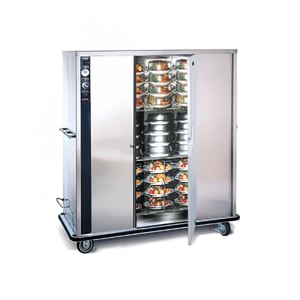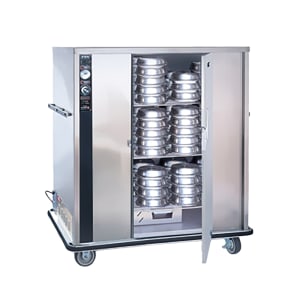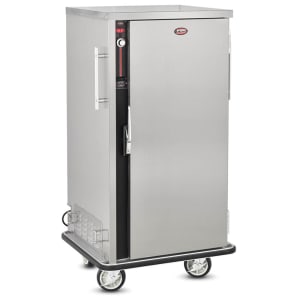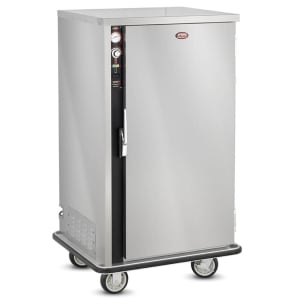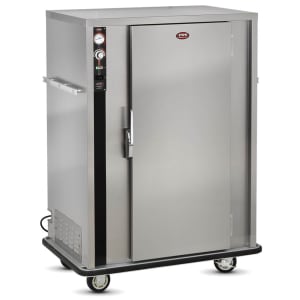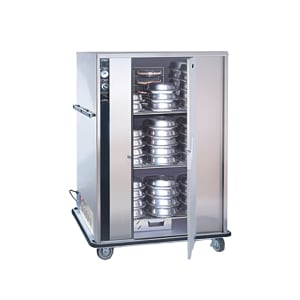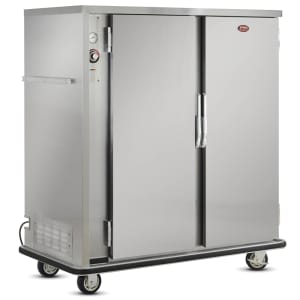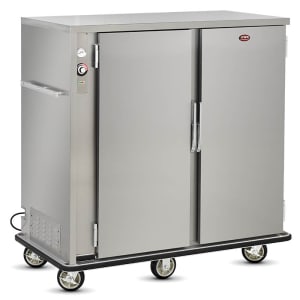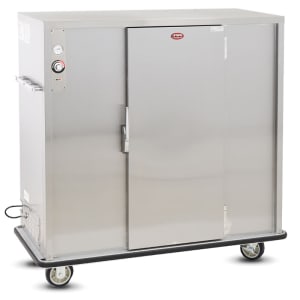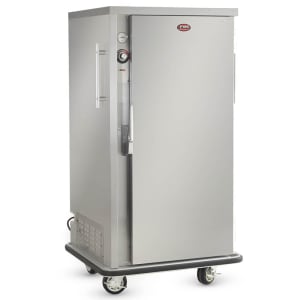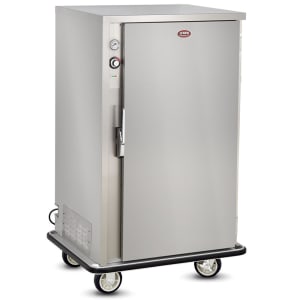Meal Delivery Carts
When beginning your search for a meal delivery cart, there are several key factors to consider. Depending on your needs, a simple insulated cart may be sufficient. In larger facilities where it can take a good deal of time to deliver meals to every room, heated or refrigerated units may be necessary to assure safe temperatures. It is important to know the widths of your corridors and doorways, as well as the sizes of your rooms to ensure you get a cart that can travel throughout the building. More
Perhaps the first consideration as you choose a meal delivery cart should be the specified meal capacity. Determined using plate or tray count, the capacity of the unit you choose should correlate with the number of meals that will need to be distributed in one trip. The smallest models accommodate about a dozen meals, while the largest can hold more than a hundred.
Material and Construction
The material that your cart is made of will have an effect on the unit's durability, usability, and aesthetic appeal.
- Stainless steel units are easy to clean and sanitize. They also stand up well to the demands of constant use.
- Aluminum is lighter weight, which can make it easier to navigate across long distances and in the limited space of corridors and rooms.
- Polymer is a durable alternative that is safe for walls and surfaces. Meal delivery carts made with it come in a variety of colors, which can be helpful in color-coding dietary restrictions, floors, wings, or halls.
Not only is it important to consider the material the food serving cart is made of, you may want to consider whether the unit has a drain, which makes cleaning and sanitizing easier.
Number of Sections and Load Type
The number of sections in a cart can vary widely, with each section suiting a different purpose. Some compartments may be open, while others are closed to provide heated or refrigerated areas. Similarly, some units have compartments with shelves or pan/tray slides, while others have a combination of both. Some of these compartments can be subdivided to accommodate both.
Meal delivery carts with pan/tray slides are designed to fit fairly specific dimensions of various pans and trays in order to maximize the capacity of the unit. If you're more interested in the flexibility to transport more than just trays or pans, you may want to choose a unit that has shelves instead. The number of doors will vary depending on the configuration that best suits your needs.
Type
- Heated units can keep meals hot as long as 30 minutes after the unit is unplugged. Some circulate air and others use heated shelving to keep food hot and fresh. They typically use humidity to keep foods from drying out.
- Refrigerated units can keep foods chilled for a brief period of time, even if the unit is unplugged for transport. They are usually insulated and have bottom-mounted condensers.
- Ambient units are not climate controlled.
- Combination models have multiple compartments, each with the ability to hold foods at different temperatures.
Specialty Options
- Insulated food serving carts are less expensive than heated or refrigerated units, but they will not keep food as hot or as cold. They may be better suited for smaller establishments, or where the travel distance between the kitchen and the recipients isn't as great.
- Programmable controls on your meal delivery cart can make continuous operation less burdensome. Settings include manual or automatic start, day and night refrigeration, and time variations. These will also typically provide diagnostics like the temperature of the unit at certain times throughout the day. The diagnostics can also tell you how long certain food has been held at what temperature, helping you to comply with HACCP guidelines.
- Pass-thru carts feature doors on both sides, making loading, unloading, and cleaning a bit easier. This may make the unit more expensive, but it can prove to be more effective over the long-term.
- Correctional packages are available to help ensure the safety of staff and inmates in prisons. These models typically have security screws in the handles, lock blocks on door hinge pins, and heavy-duty casters. Many will also have security latches and tamper-resistant controls.
- Record keeping capability is available in some units. This keeps track of temperatures within the unit and the amount of time the food has been inside, which helps to ensure food safety. This sort of log may be required by local health codes.

